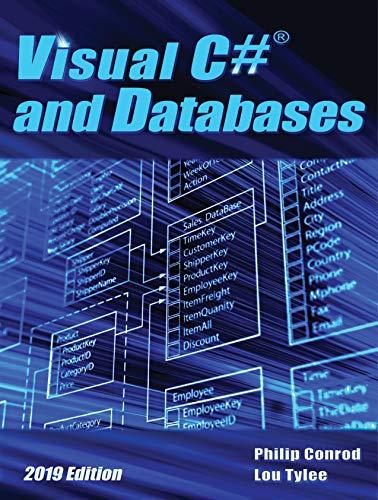Question
Objectives: 1. using indirect addressing 2. passing parameters 3. generating random numbers 4. working with arrays Description: Write and test a MASM (assembly language) program
Objectives: 1. using indirect addressing 2. passing parameters 3. generating random numbers 4. working with arrays
Description: Write and test a MASM (assembly language) program to perform the following tasks: 1. Introduce the program. 2. Get a user request in the range [min = 10 .. max = 200]. 3. Generate request random integers in the range [lo = 100 .. hi = 999], storing them in consecutive elements of an array. 4. Display the list of integers before sorting, 10 numbers per line. 5. Sort the list in descending order (i.e., largest first). 6. Calculate and display the median value, rounded to the nearest integer. 7. Display the sorted list, 10 numbers per line.
Requirements: 1. The title, programmer's name, and brief instructions must be displayed on the screen. 2. The program must validate the users request. 3. min, max, lo, and hi must be declared and used as global constants. Strings may be declared as global variables or constants. 4. The program must be constructed using procedures. At least the following procedures are required: A. main B. introduction C. get data {parameters: request (reference)} D. fill array {parameters: request (value), array (reference)} E. sort list {parameters: array (reference), request (value)} i. exchange elements (for most sorting algorithms): {parameters: array[i] (reference), array[j] (reference), where i and j are the indexes of elements to be exchanged} F. display median {parameters: array (reference), request (value)} G. display list {parameters: array (reference), request (value), title (reference)} 5. Parameters must be passed by value or by reference on the system stack as noted above. 6. There must be just one procedure to display the list. This procedure must be called twice: once to display the unsorted list, and once to display the sorted list. 7. Procedures (except main) should not reference .data segment variables by name. request, array, and titles for the sorted/unsorted lists should be declared in the .data segment, but procedures must use them as parameters. Procedures may use local variables when appropriate. Global constants are OK. 8. The program must use appropriate addressing modes for array elements. 9. The two lists must be identified when they are displayed (use the title parameter for the display procedure). 10. The program must be fully documented. This includes a complete header block for the program and for each procedure, and a comment outline to explain each section of code. 11. The code and the output must be well-formatted. 12. Submit your text code file (.asm) to Canvas by the due date. Notes: 1. The Irvine library provides procedures for generating random numbers. Call Randomize once at the beginning of the program (to set up so you don't get the same sequence every time), and call RandomRange to get a pseudo-random number. (See the documentation in Lecture slides.) 2. The Selection Sort is probably the easiest sorting algorithm to implement. Here is a version of the descending order algorithm, where request is the number of array elements being sorted, and exchange is the code to exchange two elements of array: for(k=0; k
Step by Step Solution
There are 3 Steps involved in it
Step: 1

Get Instant Access to Expert-Tailored Solutions
See step-by-step solutions with expert insights and AI powered tools for academic success
Step: 2

Step: 3

Ace Your Homework with AI
Get the answers you need in no time with our AI-driven, step-by-step assistance
Get Started


